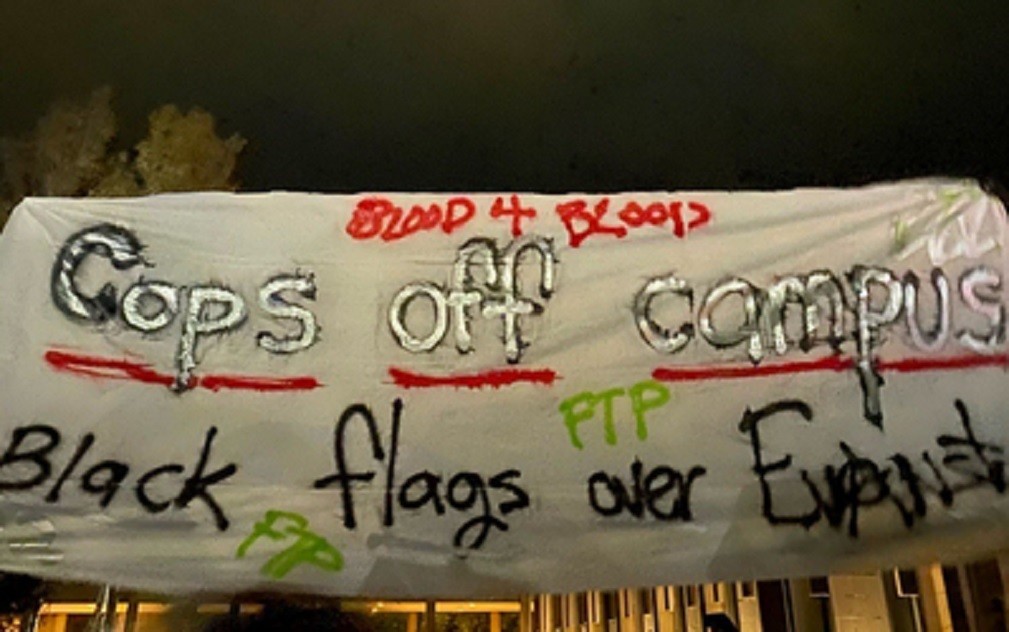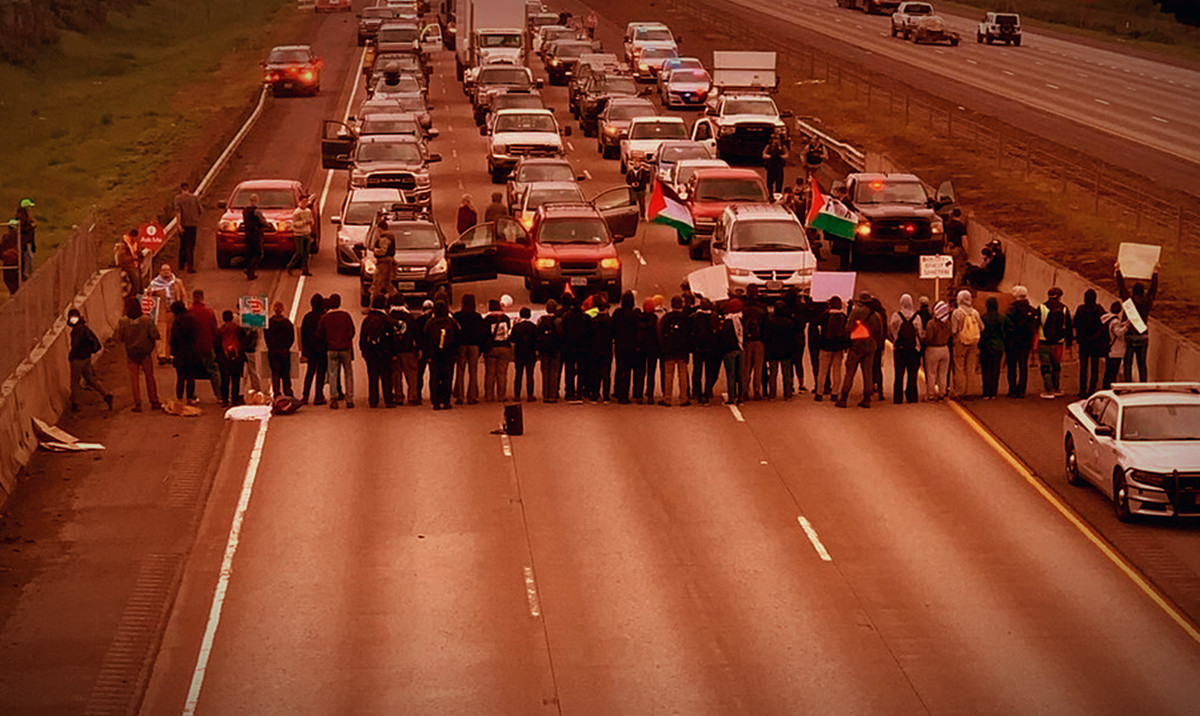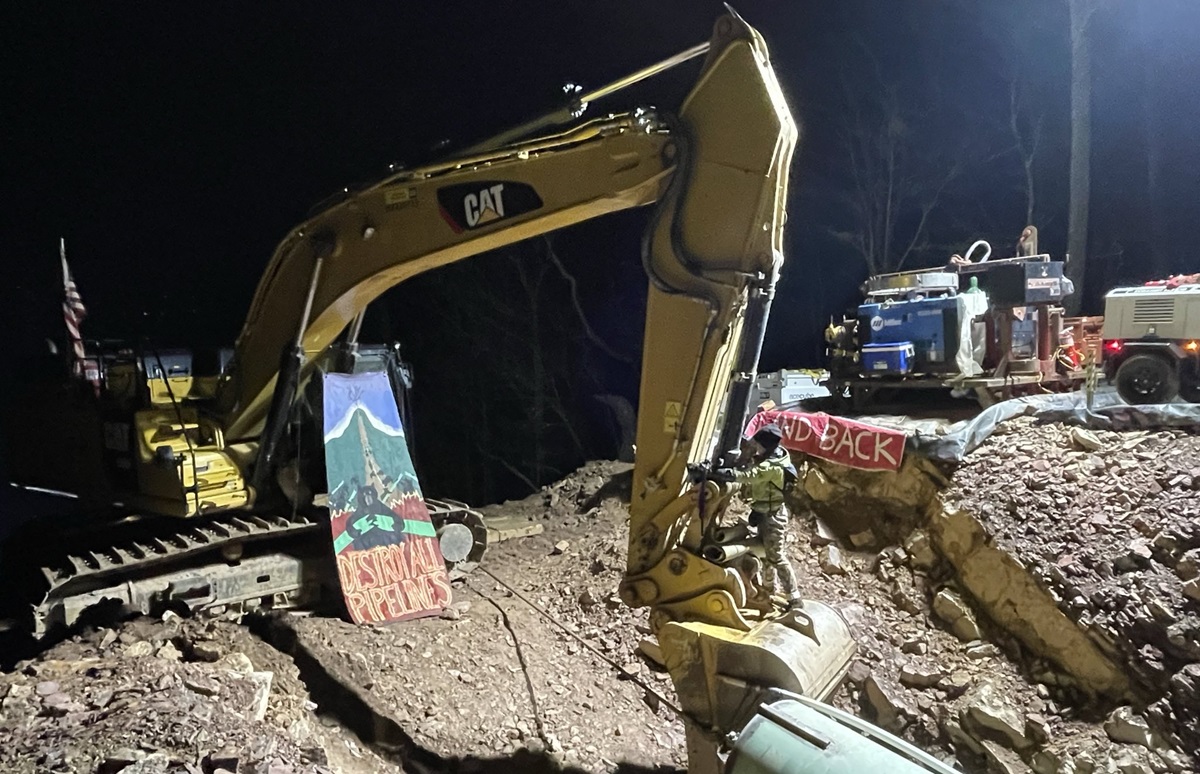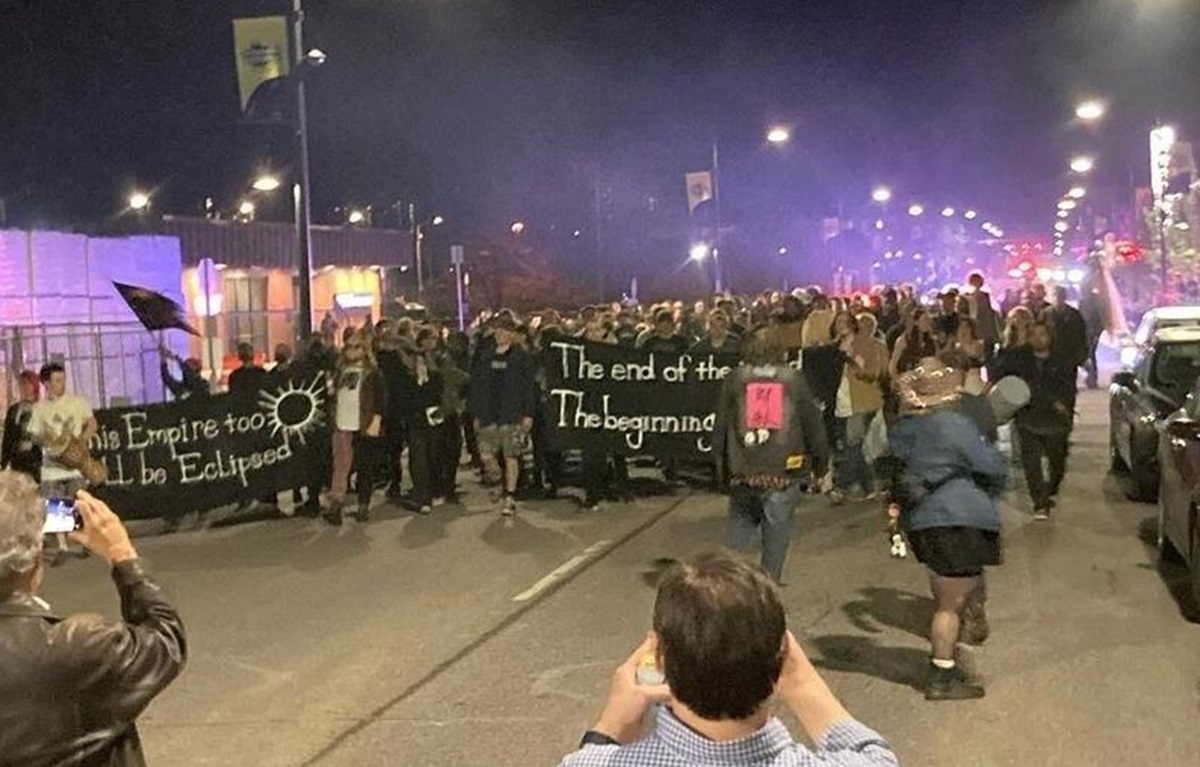Filed under: Analysis, Anarchist Movement, Incarceration, Midwest, Political Prisoners, The State

The rebellion that kicked off following the police murder of George Floyd is also giving birth to a militant abolitionism on Midwest college campuses.
This report-back was submitted anonymously by an abolitionist grad student-worker. Any criticisms waged by the author are constructive and the idea here is mostly to affirm and embolden the incredible work underway, the initiatives for total abolition on this particular campus, and the culture of student resistance continuing to grow on campuses in Chicago, Northern Illinois, and throughout the Midwest.
A close homie sent the invite Friday night, “Hey tomorrow, there is a night march, let’s go to this instead of some nasty party tomorrow.” My first reaction was… “hmm… I’ve been attending some of the daytime rallies. They have been pretty cool. The last night rally was pretty rad also.” For the first time during my stay in Chicago, I saw a black bloc and property destruction aimed at Chase Banks, Whole Foods Markets, and other symbols of racist capitalism. I saw, that evening, for the first time, how people in a crowd can move as a single mass in the night, and protect each other so others can take on more offensive risk. I think the key takeaway from that first evening was that offensives can be made; as in not only does an anti-policing protest have to sit back and be ushered by cops on the streets, defending itself into a corner. We can move however we want, given the right circumstances, preparation, and ultimately experience.
My reflection on the Hallow’s eve march through downtown Evanston brings me closer to a similar conclusion, however what differs from this day forward is the experience factor. We, students, grad and undergrad, and a few peers from campuses all over showing out in support, are learning. This is going to be an ongoing process, an experiment of sorts. Through these short report backs, we can generalize a shared knowledge of tactics and possibility; we can share positions on “What is to Be Done?” And refute others authoritative claims over the path before us. The report-back is how we make momentary (and fleeting) coherence of revolt for the sake of analysis. There is a stagnancy in coherence and intelligibility but there is also the need to plot points and map coordinates, a terrain of insurgency must be studied, and information must be shared.
Experience – concrete, lived, to be meditated on – thus defines the story of this past Halloween abolitionist demonstration at Northwestern University.
Overview of the Evening
The initial assembly through which the march departed from met at a building on the southwest end of the NU Evanston campus. A group of about 20-30 students accumulated and slowly signs and shields started being spread by a few students in bloc from jump. As the crowd grew, two cars drove by blasting YG’s “ftp” and shouting “solidarity” and “woohoo!” to the students. Most people arrived from the very beginning in all black, as asked by the protest organizers. The crowd walked through two methods of de-arrest techniques before the march began. There was a slow ebb for a moment that forced the march to delay its start, due to some Biden supporters in front of the march, heckling the organizers and making it impossible for the march to move forward.
One point of consideration is the duration of the march’s initial convergence. By making sure everyone was “trained” briefly and supplied correctly, we were enabled to do some cool things safely as a collective mass. However, delaying the march for such a distended period of time allowed police to gather and rally behind the march and along its route. Police unfortunately shaped the trajectory of the march route early, but this could be avoided by either having multiple march starting locations, or pursuing a much more rapid pace and tempo of movement going forward.
Once on the route the roads on the southern side of campus were tagged up. Along with this, people early on were lighting off firecrackers here and there, hitting street meters, and tagging up signs. One person was tagging every five feet on the street while walking. It was impressive. As the march turned at the south wing of campus buildings toward downtown Evanston, the police camera units began scaling the sides of the march. Observers and masked up participants of the protest made ad hoc walls to impede their vision. Tags continued. Fireworks occasionally lit. The crowd eventually approached a central hub of campus administrative offices. Students ascended on the stairwells of the office building in a cloud of spray paint.
A black flag was raised and waved by one student on the left side of the stairs while two other masked abolitionists lifted a banner up for all our co-marchers that read “Blood 4 Blood: Cops Off Campus: Black Flags Over Evanston.” This might be the more provocative aspects of the evening. To have a group of students, autonomously gathering, all believing and demonstrating their desire for the abolition of not only policing but the entire prison industrial complex is remarkable and historically noteworthy.

The black flag is an historical symbol of both anarchy and prison abolition. The banner drop was significant in that it sets a precedent both politically and anti-politically. It communicates both an expectation (“cops off campus”) and a threat (“blood for blood”). Soon after the march began moving further south into an area of the city lined with luxury hotels and local shopfronts that repeatedly dismiss, ignore, and in some instances aggressively harass the Black houseless community. While Evanston is superficially a city that passed a “reparations” ordinance, there is still an ostensible apartheid that defines the city’s geography. (It is also important to note the march started off with an statement by the organizers explaining the history of John Evans, the founder of Evanston, and his participation in Native genocide and the University’s ongoing role in/as colonial displacement.)
As the march proceeded, three bloced up folk lit road flares and others threw fireworks. Spray paint continued and two trash cans were lit on fire as the march turned the corner into what would soon appear to be a police kettle. It was on this bend, by the Evanston library and just before Whole Foods, where some students created a shield barrier between us and a grip of bike cops, several patrol cars, and K-9 unit. The students made a shield wall in the front, and on either end (front and back) used umbrellas to shield the group from cameras and police in every direction. We were surrounded, but the feeling was we would be alright. And we were.
Each time the police fired pepper spray at us point blank (from about 3-5 feet range), someone in the crowd would throw projectiles. At some, point a cop from the Northern Illinois’ special-unit got hit in the face with a defensive firecracker. The crowd pushed its way to the Whole Foods where two or three people began uprooting plants and throwing patio tables and chairs into the streets. The Whole Foods northern storefront was subjected to more inspiring graffiti and a second window was defiantly smashed.
As the march made its way into the heart of downtown demonstrators continued to chant and march however the decision was made to autonomously disperse. As the students began yelling “We are dispersing!” the police continued to encircle and follow the students in every direction we broke off into. They continued to follow us all with cars, even while walking home and to our places of refuge for the night. They followed us with the guns, the dog, the cameras, the bikes, all of their silly shit until the last of us cleared out of downtown.
At this point, the little crew that I roll with to these marches was already discussing the take-away points and key things to remember about the night. Below are just a few we came away with.
Moving Forward, Some Thoughts
One thing to consider is having a “false dispersal” in our pockets. That is, when we were yelling “we are dispersing” and the police become stretched thin following our dispersal, we can rapidly split and reassemble at a secondary meeting point. This is something that is rarely attempted, but could be quite useful and effective in an open arena like downtown Evanston. Another thing is if the march began at two or three different points or have a smaller action group somewhere else nearby ready to create a decoy.
Decoys are incredibly effective and useful. So is deception. Kwame Nkruma, revolutionary strategist from Ghana, writes of “deception” as a central component of guerrilla warfare and effective insurgencies. Students can take some lessons from the long archive of guerrilla warfare, which is accessible on a number of websites such as: The Anarchist Library and Marxist Library. There is also an incredibly useful archive of literature on insurrectional mutual aid and strategy, which can enable all sorts of new horizons for our movement to grow and continue to mount a viable opposition to the capital “P” police.
Another point to consider if on the pace and tempo of a march like the one in downtown Evanston the other night. There are several really important anti-capitalist marches that we can learn from, but one in particular that could set a model for future planning is the anti-capitalist march at the Occupy Oakland “General Strike” back in 2011. The videos below show the progression of the march:
Essentially what is needed to pull off a march like this is not so much preparation in terms of over-planning but preparation in terms of: 1) logistics and 2) having a shared set of principles. With a rapid pace march, with its sights set in a principled manner on major corporate, military-industrial and prison-industrial complicit businesses and landmarks in Evanston, a real clog in the arteries of racist carceral capital can be made. The movement at Northwestern University is indeed operating with a respect for a diversity of tactics, relative to the goals of each specific day of action that #NUCopsOffCampus hosts. The movement is also beginning to collectively understand insurrectional abolitionism as our desired flavor of choice.
What we are achieving through active and militant revolt is truly unprecedented in these parts. What we are seeing is breakdown in the legitimacy of the university’s administration and its policing apparatus. We are also seeing more and more students actively disregarding the sanctity of property and ruling class space. It is important work that is as educational as much as it is a challenge to order through direct action. It is a revolting kind of pedagogy. Such an atmosphere of blossoming knowledge-in-revolt, embodied in our collective action as principled abolitionist student militants, means that we have a lot more control over the terrain of struggle than most of us even realize. These are the only conditions you really need to take the revolutionary initiative into your own hands.
I am not a protest organizer, so it must be repeated that these are just the ideas of a lonely partisan who has made community attending these joyous gatherings. But I do think we all need to recognize some stake in imagining big when it comes to the potential, possible, and imminent horizon of the movement to abolish the prison industrial complex on Midwest college campuses. If we say we are revolutionary abolitionists, then what exactly does that mean? And if we co-inhabit the University and you remain inactive in the struggles that define our time here, what in fact does that mean? Maybe we need to think about embodying a different relationship to administrative authority.





